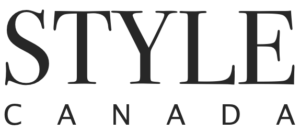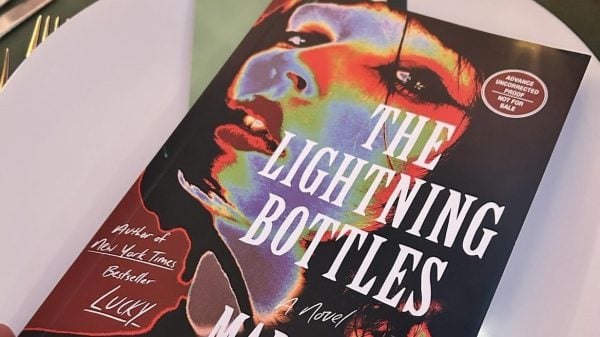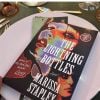Welcome to STYLE Canada’s Boreal Book Club: a monthly meeting narrated by Erin Catto, (reviewer at Girl Well Read), for bookworms who are looking to scour new pages. Each instalment of our Boreal Book Club will feature a Canadian author and their latest title. Be sure to use the hashtag #BorealBookClub to share with us on social! This week’s pick is Theory of Crows by David A. Robertson.
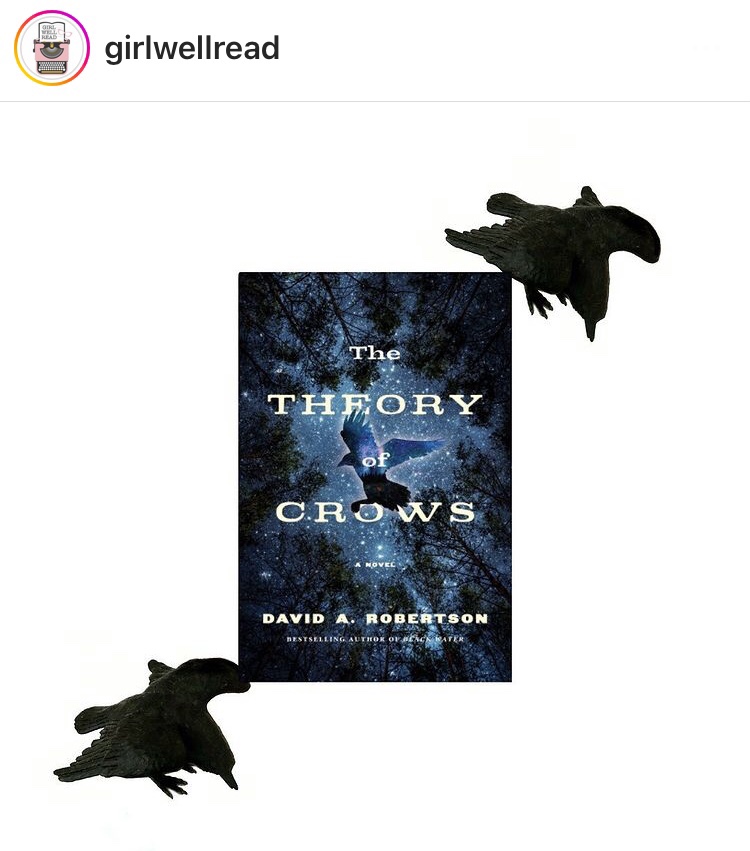
@girlwellread via Instagram
When a troubled father and his estranged teenage daughter head out onto the land in search of the family trapline, they find their way back to themselves, and to each other.
Deep in the night, Matthew paces the house, unable to rest. Though his sixteen-year-old daughter, Holly, lies sleeping on the other side of the bedroom door, she is light years away from him. How can he bridge the gap between them when he can’t shake the emptiness he feels inside? Holly knows her father is drifting further from her; what she doesn’t understand is why. Could it be her fault that he seems intent on throwing everything away, including their relationship?
Following a devastating tragedy, Matthew and Holly head out onto the land in search of a long-lost cabin on the family trapline, miles from the Cree community they once called home. But each of them is searching for something more than a place. Matthew hopes to reconnect with the father he has just lost; Holly goes with him because she knows the father she is afraid of losing won’t be able to walk away.
When things go wrong during the journey, they find they have only each other to turn to for support. What happens to father and daughter on the land will test them, and eventually heal them, in ways they never thought possible.
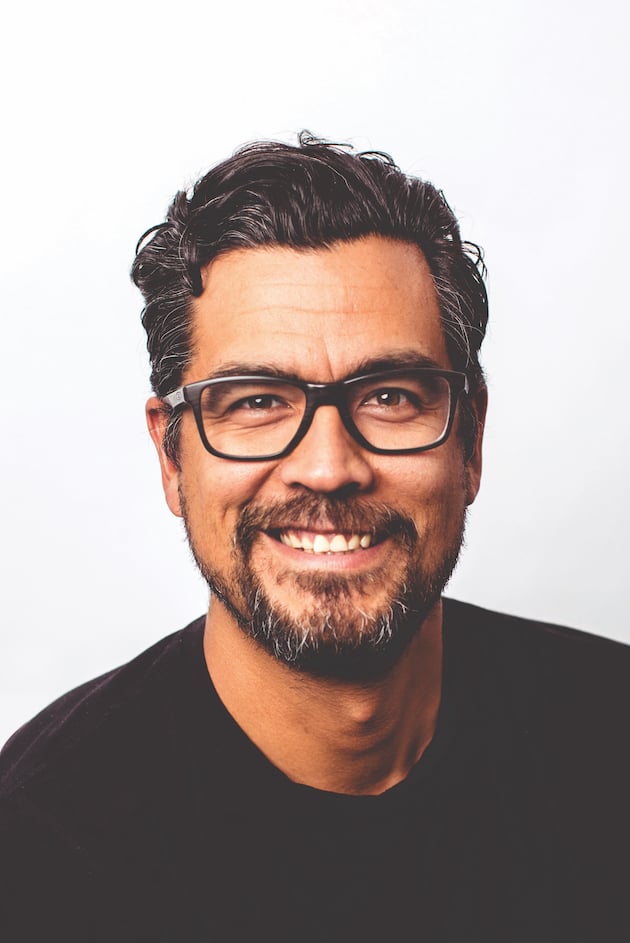
David A. Robertson (Amber Green)
Told through a fractured relationship between a father and daughter, Robertson’s first adult novel is a story of healing. Blended with Indigenous culture, The Theory of Crows is a moving, emotional, and consuming story.
The Theory of Crows is written from both Matthew’s and Holly’s point of view as well as through Matthew’s letters to Holly. Robertson uses this epistolary narrative style to allow Matthew to explain his feelings and apologize to Holly, to say all the things that are weighing down his heart. Some of the most raw and beautiful writing is in these passages.
The journey to find the family cabin and trapline is the vehicle that Robertson uses to explore Matthew and Holly’s relationship. Matthew is a complex character who is grappling with his mental health and how close he is to destroying his family. Another paramount character is the land itself—Matthew is not only seeking its healing, but also a connection to it and by extension, to his father.
This poignant and powerful novel is about connection, familial bonds, and of the gifts offered from the land. Highly recommend!
Scroll to learn more about David A. Robertson Marshall in an inclusive interview with STYLE Canada!

@davidrobertsonwriter via Instagram
GWR: Your writing spans a variety of genres, do you approach each book the same way? And do you have a favourite genre to work in?
DAR: I wouldn’t say that I approach each book the same way. They’re all a different thing, even though I suppose there are some skills that cross-pollinate. Writing a middle-grade fantasy novel is different than a memoir, for sure, but at the same time they’re still stories. They require an arc, a journey, a theme. I’m proud of my career in that I’ve been able to adapt to different forms of literature and genres, and to find success in most areas. I like the challenge of not only learning how to write in these areas, but writing well. I do find that I still have a scheduled approach to writing any book, and that doesn’t change. So, whether it’s 2-3 pages a day for a picture book, or 1,500 words per day for a novel, I bite off little pieces at a time until I’ve finished the project. It’s hard to pick a favourite genre. I really do love most of them. I’ve had a lot of fun writing fantasy, and incorporating supernatural elements into otherwise realistic fiction, and the challenge of making supernatural feel realistic. But if pressed, I’d say that picture books are my favourite. That’s not a genre, so I cheated.
GWR: How long did it take you to write The Theory of Crows and how many drafts were there before publication?
DAR: The Theory of Crows took at least a year to write, which is a long time for me to complete a first draft. I wrote a fair amount of it, and then I left it for a little while before returning to the story and the characters. I guess I felt that I wasn’t ready for the entire journey initially, and needed to be ready. Maybe it was also just hard knowing that it was another way to say goodbye to my father, and I didn’t want to. Working with Jenn Lambert was incredible. She’s a very good editor, with a very good eye for what works, what doesn’t, but is also open to discussion on elements that we may not agree on. Initially, for example, the ending was up for debate, and we found a common ground that was perfect for the story. So, it was a path we walked together. There were a lot of steps on that path, as there is with any book. Some are big steps, some are small. So, including substantive work and then line editing, I’d say there was at least 7-8 drafts before The Theory of Crows was ready.
GWR: What was the inspiration for the novel?
DAR: There were a number of inspirations that converged to make this novel happen. It was the concept of crows and how they remembered faces for years, and how they might even be able to pass down recognition through generations. I just loved that so much. It was a natural fit for how I feel about our connection to ancestry, and place. When I went to the trapline with my father, I felt like I belonged there, but I’d never been there before. That’s blood memory. Then the thought is, Did the land remember me? That thought was embodied in the concept of the crows. Another inspiration was music, and how it’s integral in my creative process, but more than that, how it’s helped to save my life when I’ve been at my lowest. I wanted this book to be a love letter to a lot of things, and one of those things is music. And then it was just personal shit I was going through and needed to work through. It was losing my father, and imagining bringing him back to a trapline we couldn’t get to, because we couldn’t find. I still want to find it. This was my way of looking for it, in a spiritual sense. It was my depression after losing my father, and burnout after working so hard in 2020 and taking on too much. It was how that depression affected my relationships, including with my oldest daughter. And it was how I was able to find a way to heal, and through that, heal the brokenness that I had caused. So it’s a very personal book, but I find that there are elements of my own struggles that many people will relate to. Stories connect us in this way.
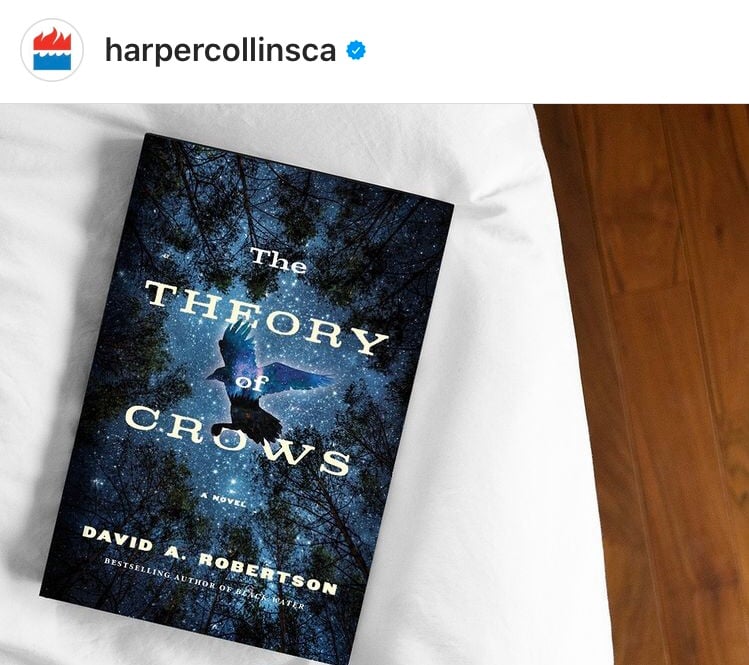
@harpercollinsca via Instagram
GWR: I loved the use of song lyrics—does music have an impact on your writing? Does it play a role in your writing process?
DAR: Yes. A huge role. I listen to music when I write, when I edit, when I drive, when I do anything. I feel like I need it like I need air. And it really did help me to get through some scary personal moments where depression was suffocating me. There were a lot more song lyrics initially, but I had to tone it down a bit or else there would’ve been as many lyrics as there were my own words. Plus I had to pay for using them, so in the end, I had a friend who allowed me to use lyrics of his (John K. Samson), which I’m so grateful for. And I had to choose the one set of lyrics that embodied the theme, but also meant a lot to me. That was Sufjan Stevens’ Requests.
GWR: You also employ an epistolary narrative style with the incredibly moving letters that Matthew writes to Holly. Were they always part of the story? How did you decide where and when to use them?
DAR: They were always part of the story, for sure. I thought it would be a really unique approach, and also a window in Matthew’s state of mind, how he needs to find a way to tell Holly he’s sorry and to explain why he messed up so badly (and why he was messed up so badly). They aren’t linear, and they don’t appear in any structure, so placing them into the story was a bit of work. I just tried to match them thematically to the areas of the book they appeared in. I took a few letters out in the drafting process, but kept in the ones that either built character in the best way, or were the most emotionally evocative.
GWR: What was the hardest scene to write?
DAR: It was a scene where Matthew is standing in front of a mirror, and feels sickened by himself, when he’s at his lowest, and almost makes a very harmful decision. I didn’t want it to be too heavy handed. I didn’t want it to be manipulative in any way. I just wanted it to feel real, and painful, and beautiful. Not that there’s beauty in that sort of harm, but it helps to balance the pain, in a way. But since I’d been there, it was incredibly hard. Almost too hard. Other than that, it was hard to write a realistic, believable, teenage girl, in Hallelujah. As a middle-aged man, I really relied on my daughters to find that authenticity. But finding the right headspace to write Holly, and to do it well, was tough.
GWR: This novel takes a deep dive into identity, mental health, and grief—while paying respect to the land—why was it important to include these elements int the story?
DAR: It was important for me to write about the things I’d been going through in an emotionally honest way, and also because I know that other people are going through things too. And sometimes when you see somebody else struggling, it makes you feel less alone. Even if it’s a fictional character. And that can be a life-saving thing. Art saves lives, I know it does. I would never say that anything I’ve done has saved a life, but I do know that it’s helped a few people feel seen and less isolated in their pain. That means a lot to me. You know, human beings, we’re not that different from each other. We forget that sometimes. Stories help us to remember that, I think. As for the land, I wanted to express my love for it, and the power of it. I’ve been really focussed on the land in my more recent work. Going there, spending time with my dad there, revealed so much about myself, to me. And it also revealed so much about our spiritual connection to the land, and how we need to find a reverence for it, in order to protect it, and be better stewards for it. So, in this story, the land is another character, and it helps people heal. I believe that it does this practically, in real life, as well.
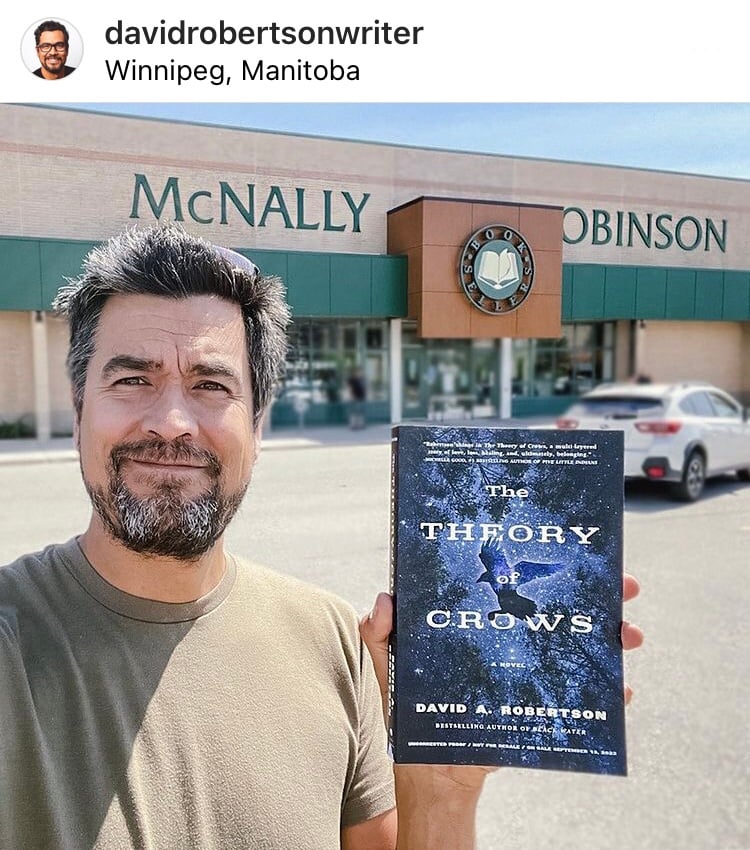
@davidrobertsonwriter via Instagram
GWR: What made you decide to write the book from a dual point of view? Was it easier or more challenging to explore the parallel storyline?
DAR: It was definitely more challenging. Switching perspectives is always hard, because you don’t want to pull the reader out of the story. You don’t want it to be jarring, unless being jarring helps the story. It was necessary, though. I wanted to show the journey, both physically and internally, of both characters. The reader needs to feel that journey for both, not just see it. So you can understand what they are both going through intimately, and you can, through that, understand their motivations and actions. It’s a tricky balance, but if I pulled it off, it’s worth it. It was also kind of neat to write in an almost YA voice, and an adult voice. I liked that contrast.
GWR: Do you have a favourite chapter or scene?
DAR: I like the letter from Matthew to Holly when they’re standing in front of the ocean together, their shoes off, about to leave Haida Gwaii. I loved connecting that to the ending scene, which I love. But yes, saying more than that would be a bit too much of a spoiler. I also really liked writing Holly hanging out in a bathroom for several pages. It was fun to try and write interesting, and pretty, prose where a character is in a bathroom stall.
GWR: What do you hope readers will take away from The Theory of Crows?
DAR: I don’t know. I guess I would say that I hope they take from it what they need. I don’t think I could assign that to any reader. Art means something different to everybody. This book will mean something to one reader, and something else entirely to another. And that’s the beauty of any story.
GWR: Can you share what are you working on now?
DAR: I just signed on to write two more adult fiction novels with HarperCollins. I have a non-fiction book with them as well that I’m working on. I have the last three books in The Misewa Saga, my middle-grade fantasy series. I have a chapter book series that I’m starting to work on about an Indigenous girl who’s got some challenges but finds a way to overcome them and solve mysteries. I have two more graphic novels in The Reckoner Rises series. I have two pictures books coming out in the next couple of years, the next one being my next published book, The Song That Called Them Home. I have a graphic novel that’s set in the world of The Misewa Saga. And I have a hockey book coming out as well. So, there’s a lot. When I read what I just wrote it stresses me out.

